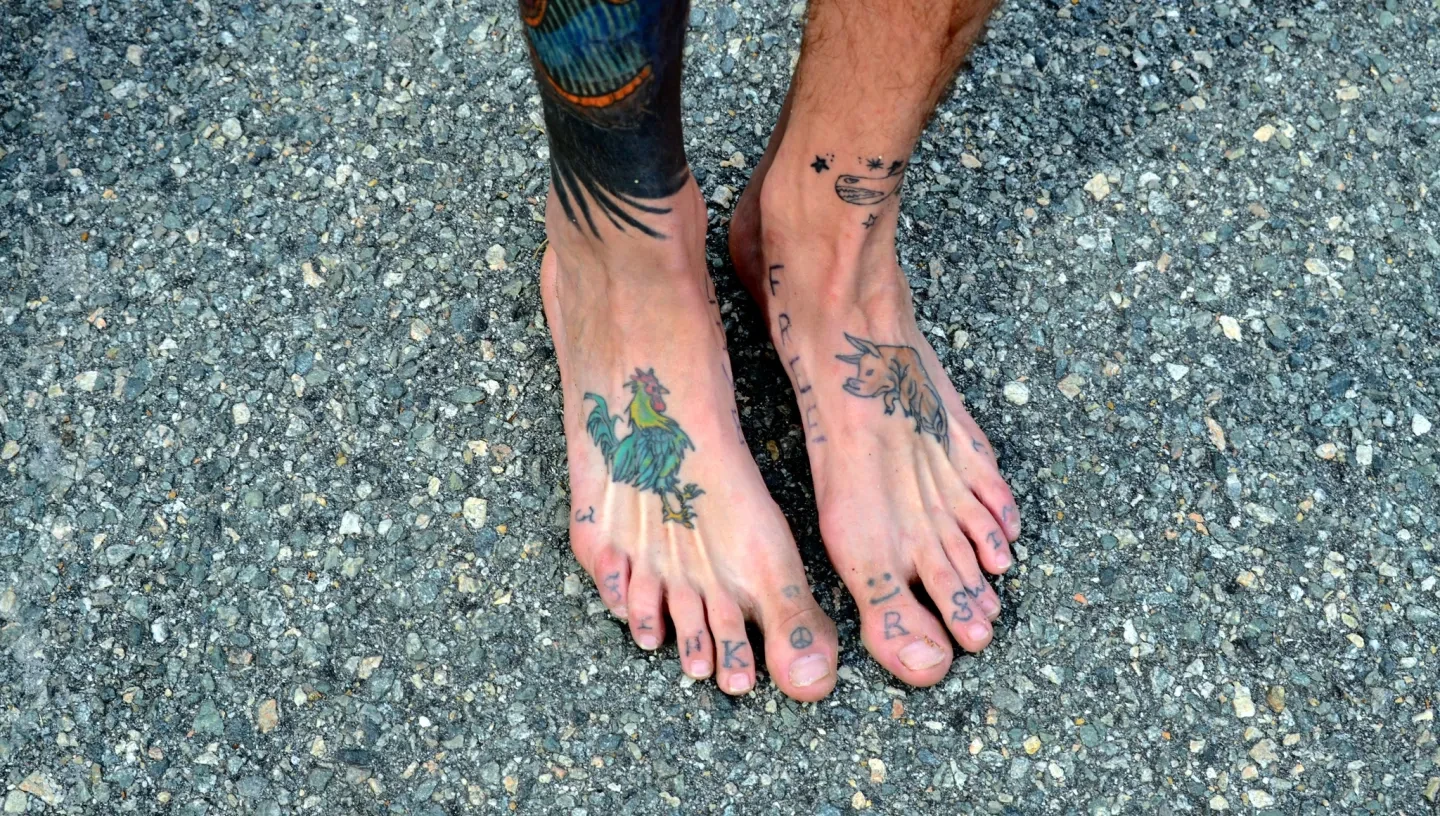
Tattoos have adorned the highest born royals and the lowliest sailor in Europe for at least 5,000 years.
The iceman cometh
In October 1991, the 5000 year-old frozen body of a Bronze Age hunter was found between Austria and Italy. His body bore several tattoos.
Özti the iceman was so well preserved that scientists were able to make out a number of tattoos. These included a cross on the inside of the left knee, six straight lines above the kidneys and a series of parallel lines on the ankles.
Ancient Greece
Histiaeus of Miletus, who was being held against his will by King Darius of Susa, sent a tattooed secret message to his son-in-law, Aristagoras. Histiaeus shaved the hair of his slave and tattooed the message on to the man's head. The slave was told that the procedure would cure his failing eyesight. When the slave's hair had grown back sufficiently to hide the tattoo, he was sent to Aristagoras, who shaved his head and read the hidden message. The message instructed Aristagoras to begin a rebellion.
Signs of faith
Early Christians often had the sign of the cross tattooed on their bodies, particularly their face or arms.
Around AD 325 the Emperor Constantine outlawed tattooing of the face because he believed that the face was in God's image and should not be disfigured. In AD 787, a council of churches renounced all forms of tattooing and sealed the fate of the practice in the eyes of the Christian church once and for all.
Much later, a representation of the crucifixion tattooed on a slave's back was said to preserve the bearer from a whipping. It was thought that no Christian, however cruel, would lash the image of Christ.
Royal tattoo
King Harold II of England had a number of tattoos. After his death at the Battle of Hastings in 1066, his tattoos were used to identify his body.
Many other royals throughout history have been tattooed. In 1862 Albert, the Prince of Wales, later King Edward VII, had a Jerusalem Cross tattooed on his arm on a visit to the Holy Land. When his sons, the Duke of Clarence and the Duke of York (later King George V) visited Japan in 1882 they both had dragons tattooed on their arms.
Among the Russian royal family, Peter the Great, Catherine the Great and Nicholas II all bore tattoos.
Sailors' tattoos
A pig tattooed on one foot and a rooster on the other were said to protect a seaman from drowning. Neither animal can swim and it was thought they would help get the sailor swiftly to shore if he fell into the water.
Other popular tattoos amongst sailors are also attributed with particular meanings:
- a full-rigged ship shows the seaman has sailed round Cape Horn
- an anchor indicates he has sailed the Atlantic Ocean
- a dragon denotes that the bearer has served on a China station
- a shellback turtle shows the sailor has crossed the Equator
- 'Hold' tattooed on the knuckles of one hand and 'fast' on the other were said to allow the bearer to grip the rigging better
Society tats
Winston Churchill's mother, Lady Randolph Churchill, had a snake tattooed on her wrist.
It became fashionable in the late 19th and early 20th centuries for aristocrats, including women, to be tattooed. At the time, tattooing was very expensive and people paid large sums for their designs. Later, as the costs were reduced, tattooing was adopted by the lower classes and the practice fell out of favour with the social elite.
The world's most tattooed person
The world's most tattooed person until recently was Tom Leppard who lived on the Isle of Skye, Scotland. He has 99.9 per cent of his body covered with a leopard-skin design.